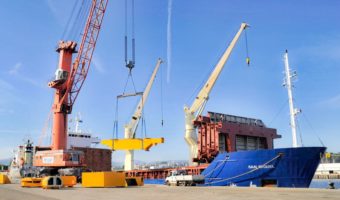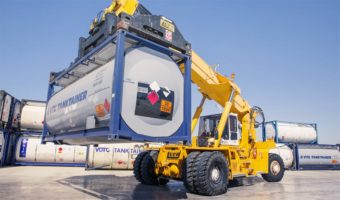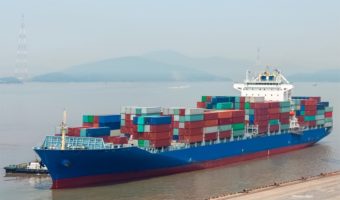OCEAN FREIGHT
WE COVER SEA & OCEAN TRANSPORTATION
The transfer of cargo by sea is the primary chauffeur of worldwide profession. It imports or exports products in between continents financially, despite their quantity or nature.
Import or export products, goods or large loads to any part of the world and more economically than other means of transport.
In Swift Cargo Mover, you will find a team of professionals with more than 44 years of experience in maritime shipments, both in maritime containers and special Break Bulk projects or complete charters.
Among our range of maritime services you will find:
- Sea transport of goods in shipping containers.
- Transport of dangerous goods by sea IMO IMDG.
- Special cargo and Break Bulk sea transport.
- Ro-Ro transport of roll-on/roll-off cargo.
- Chartering of seagoing vessels for the transport of large volumes.
- Transport of shipping containers by road or rail.
- Sale and rental of used shipping containers.
Your goods, to/from anywhere in the world, at the lowest cost.
Sea freight transport is still one of the best options for the development of the world economy, due to the large cargo capacity that can be moved from one geographical point to another.
Currently, this type of transport represents 80% of all products moved around the world, compared to air and land transport.
We provide you with all the transport services related to maritime transport: customs clearance, transshipment of goods or palletisation and delivery at the destination facilities
Modes of sea freight transport
Whether by sea container, Ro-Ro or by charter, we are a versatile and flexible alternative for moving any kind of goods, whether perishable foodstuffs, heavy machinery, bulk cargo, liquids or even dangerous goods.
The modalities that can be found in this means of transport are the following:
Regular line mode
This consists of the operation of merchant ships for the transport of goods, following fixed routes and frequencies, and offering a recurrent service.
Departures from and entries to ports are included in their itineraries, and the costs are fixed in advance in the shipping companies’ tariffs. In this mode, it is easy to obtain an approximate quotation of the cost of the operation.
This mode is more economical than chartering, as it is focused on the goods being loaded in sea containers, making better use of space and distributing the transport costs among more users.
This type of regular line can be carried out through:
- Conferenced traffic, in which several shipping lines agree on a certain regularity in providing service on a route and charging uniform freight rates.
- Independent shipowners or Outsiders, which are companies that have not committed themselves to regular routes, pre-established itineraries or to defining a tariff.
- Consortiums, in which different companies contribute resources to form a single company to manage the routes.

Maritime Chartering Shipping
In this modality, all or part of the cargo space of a vessel is contracted, whether for a single voyage, several voyages or a limited period.
In the charter party, there is a relationship between the charterer, the party that has the goods to be transported, and the chartering shipowner, the shipping company that has the appropriate vessel for the goods.
The contractual relationship between the two parties is established in a document called Charter Party or charter party.
This service can be contracted in 3 ways:
- By time: paying for the stay while the vessel is being used, for a set time.
- Per voyage: in this case, payment is made for the voyage as such and not for the time, with the shipowner retaining the commercial management of the vessel.
- Bareboat charter: here the vessel is rented in its entirety to nominate the captaincy and crew
To hire our chartering service, we recommend that you go to the service page, where more information is available.
Which modality to choose?
It all depends on the volume, recurrence and nature of the goods you wish to move.
For small quantities where the price of transport has a major impact on the price of the product, it is certainly best to choose the regular line mode.
If, on the other hand, you need to move a large number of goods, whether in bulk, large structural pieces, or a massive amount of perishable products, such as fruit or vegetables, opting for the maritime charter mode is the best decision.
Shipping Dangerous Goods IMDG
Import or export dangerous goods by sea with the most economical means of international transport.
National maritime transport
We carry out regular domestic maritime transport operations from the Iberian Peninsula to the Canary Islands or the Balearic Islands.
We sail every day to the Balearic Islands, and on Fridays to the Canary Islands. Occasionally, and depending on demand, we also sail to the Canary Islands on Tuesdays.
Our service adapts to the needs of the client and the location of the goods, with multiple options to choose between groupage of goods and full load, and can also be combined with maritime container transport by road or Ro-Ro mode.

International sea freight transport
International maritime transport is the mainstay of foreign trade in goods between countries. It represents more than 80% of global trade in goods and 50% of Spanish imports and exports.
As we have already mentioned, it is the most economical, profitable, efficient and safe international transport system, being able to send large quantities of maritime containers and volumes at a very low cost.
As our name indicates, we have extensive experience in international maritime transport, regardless of its type, origin or destination.
We guarantee an excellent international trade service thanks to the availability of our staff of customs agents, contracts with the main shipping companies and a highly qualified team with a long experience in the sector.
Incoterms in international Trade Terms
Incoterms or international trade terms are used to delimit the obligations that the importer has towards the exporter.
Among all of them, we would like to highlight those related to international maritime transport, for which we mention the following:
FOB (Free on Board)
FOB is an international trade term used for the purchase and sale of goods by sea or inland waterway.
In the FOB clause, the seller is responsible for delivering the product at the port of shipment, directly on the cargo ship agreed between both parties. At this point, all risk is transferred to the buyer, who is responsible for all other costs.
The seller only has to carry out the outward customs formalities and arrange the main transport at the buyer’s expense.
The costs of FOB operations, once they arrive at the port, are called “strict FOB” where the following are considered:
- The cargo.
- The carriage.
- Receiving costs.
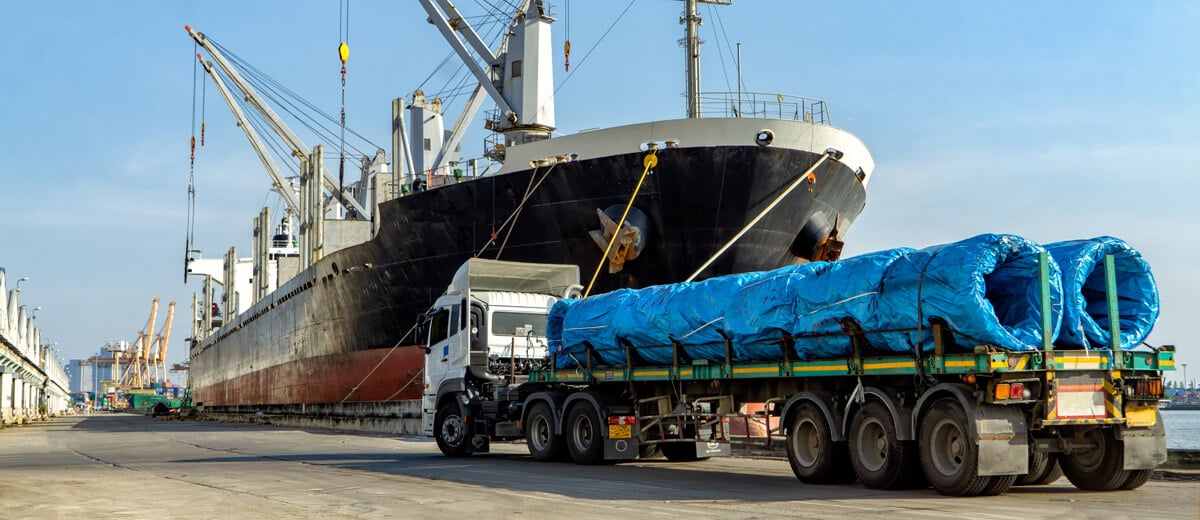
FAS (Free Alongside Ship)
The FAS, like the FOB, is a clause exclusive to international maritime trade.
Its main difference with FOB is that the seller’s responsibilities end when the goods are left on the quay at the port of shipment. The rest of the costs and responsibility until its arrival at destination are borne by the buyer.
This Incoterm is very common, for example, in the transport of bulk goods by ship.
CFR (Cost and Freight) and CIF (Cost, Insurance and Freight)
The CFR and CIF Incoterms are very similar, except that, in the second (CIF), the transport insurance during the sea voyage is paid by the seller.
In this situation, the seller bears all transport costs until the cargo arrives at the port of destination, excluding the unloading of the goods. Once there, the buyer must bear the costs from handling at the port of arrival to destination.
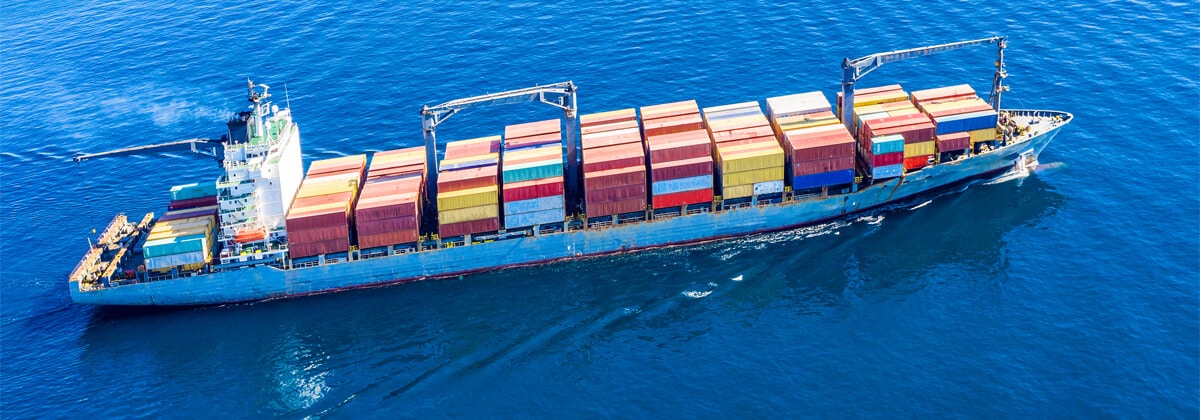
Advantages of sea freight transport
The advantages of maritime transport are many, and some of them have already been mentioned above. Without dwelling on the type of goods to be transported, we find the following advantages:
- Affordable price: the maritime alternative continues to be the most economical in general terms for long distances such as international transport.
- Scope: the coverage of this means of transport is unlimited, as two-thirds of the planet is covered by water.
- Variety of goods: there are many types of sea containers or adaptations to transport all kinds of products.
- Safety: by following pre-established routes with little traffic, accidents or delivery delays are very, very rare.
- Weight limitations: much less restrictive compared to land or air transport.
- High volume of cargo: possibility of moving loads with dimensions much larger than those that can be transported by plane, train or lorry.
Disadvantages of sea transport
Despite the advantages, transport by sea also has some disadvantages, which in many cases do not harm logistical operations, but it is worth knowing about them:
- Duration: the main disadvantage of maritime transport is the time required to travel the distances between ports, having to skirt continents.
- Weather: depending on weather conditions, the departure of a merchant ship or the arrival of cargo at a port may be delayed.
- Low regularity: this type of transport requires prior preparation before sailing, so it is not possible to have scheduled departures from one day to the next or urgent departures as there are in other modes of transport.
- Time-based planning: Due to the long journey time of most shipments by sea, shipments must be planned so that the dates match and the goods are delivered without delay.
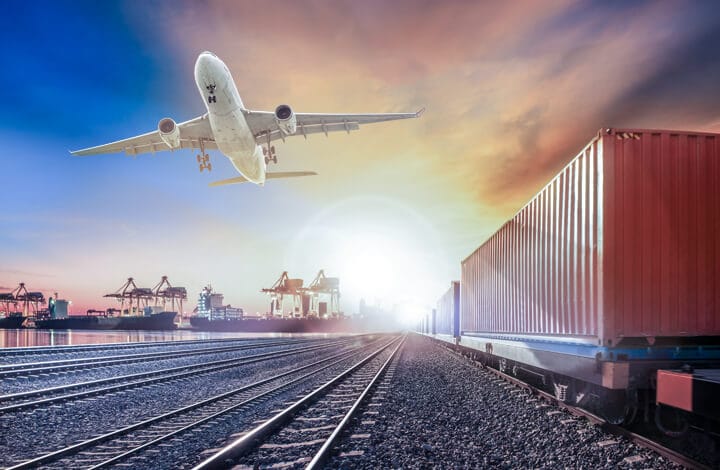
Other means of freight transport
For shipments of goods, whether to other countries or within Spain, it is best to choose the means of transport that best suits your needs.
For this reason, at Transguard Storage Logistics you will also find the following services:
Airfreight transport
Brief history and evolution of maritime transport
Finally, we will talk a little about the history and evolution of the maritime transport of goods.
From the Egyptians to the Phoenicians
Its introduction took place when the world began to show the need to move cargoes to distant places, crossing large bodies of water.
The first documented models of ships used to transport goods date back to the 25th century BC. On one such voyage organised by the Pharaoh Sahure, large quantities of myrrh, electro and ebony logs were transported to the country of Punt.
Centuries later the Phoenicians did invent merchant ships proper, intended exclusively for the movement of goods. The Phoenicians are also remembered as the forerunners of maritime routes, having a constant recurrence in their voyages around the Mediterranean, even going as far as the United Kingdom and Ireland.
The Modern Age
As the ages progressed, the design of ships improved, allowing them to make longer voyages and carry greater quantities of goods.
Many centuries later, around the Modern Age, galleys began to be used, a vessel pushed by the wind and oars placed on the sides of the ship with the help of human effort.
These vessels would be replaced by caravels, which functioned differently because the main means of propulsion was wind alone. The design of the sails shared the square and triangular shape to make the most of the force of the air.
The 17th century was the birth of the frigates, the predecessors of the steam-powered ships that would see the light of day in the 19th century.
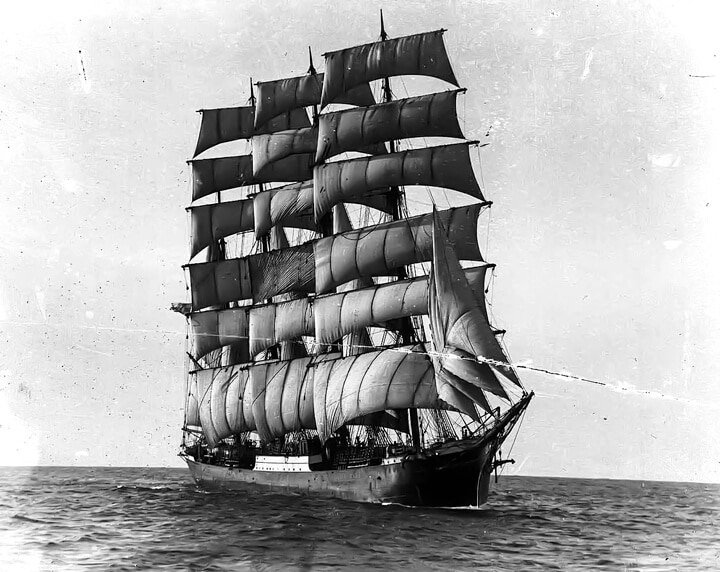
The Contemporary Age
At the end of the 19th century, specifically in 1897, Rudolf Diesel developed the fossil-fuelled engine which replaced the steam engine.
Then, as the years went by, the manufacture of ships began to optimise the shipment of goods across intercontinental routes followed by the construction of ports.
Finally, the construction of the Suez Canal (in 1867) and the Panama Canal (in 1904) made it possible to shorten maritime routes, saving the dozens of days it took to sail around the African continent and South America.
We offer you a door-to-door sea freight service, from collection to delivery, without having to worry about the details of operations and possible dispatches, with the peace of mind of having a team of shipping agents on your side.


